Food-Grade Essential Oils: How the Food Industry (& Home Cooks) Use Essential Oils for Flavor
In a hurry? Click here to read the Article Summary...
Here’s a promising health fact: Americans are spending more money on organic and natural foods than ever before. According to the Organic Trade Association, the U.S. market for organic products had a record year in 2018, breaking the $50 billion mark for the first time.
As consumers demand more natural ingredients in the products they’re buying – including processed foods – the food industry is taking notice in all kinds of interesting ways. This includes using food-grade essential oils instead of toxic chemical agents for both flavoring and preservation.
Unfortunately, the food industry cuts corners just like many other industries. After all, the bottom line is critical for many corporations’ success.
So, how do you know if the “natural flavoring” used in your favorite ice cream, cookie, pasta sauce, or pickle comes from food-grade essential oils or some chemical concoction? And do the health benefits of essential oils such as citrus varieties, lavender, rosemary, and basil stay intact even after heating or baking?
Let’s dive into the little-known yet emerging world of food-grade essential oils…
Using Food Grade Essential Oils for Flavor
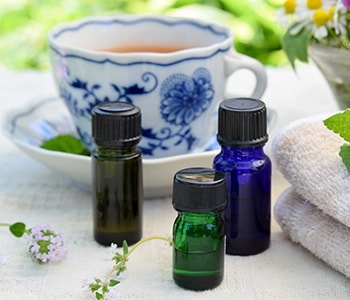 There are two basic ways that essential oils can be used in commercially produced foods.
There are two basic ways that essential oils can be used in commercially produced foods.
One way, of course, is for flavor. The types of food that could potentially use essential oils in this way are endless.
A few examples include:
- Pudding
- Flavored gelatins
- Pastries
- Chewing Gum
- Sauces
- Salad dressings
- Herbal and flavor-infused teas
- Ice cream
Even “all-natural” toothpaste and mouthwash are often flavored with essential oil ingredients such as myrrh, fennel, clove, or peppermint. (You can find a DIY toothpaste recipe here.)
Companies that go the natural route of using food-grade essential oils for flavor can combine the terpenes (compounds) of certain oils together to get some very interesting flavor combinations. For example, the terpenes linalool and linalyl acetate, the main fragrant compounds in bergamot, exhibit a lavender-like flavor. Linalyl acetate alone, on the other hand, has a sweet flavor that is similar to a pear.
How Essential Oils Are Used as Preservatives
Essential oils are also used as natural preservatives in lieu of chemical-derived preservatives that, as we all know, have been linked to cancer and other detrimental health conditions. Sodium nitrate, anyone?

Hands down, citrus oils have the best track record when it comes to food preservation because of their anti-fungal and anti-bacterial properties.
Lime, lemon, grapefruit, and bergamot oils contain high amounts of volatile compounds and have been used worldwide for centuries.
Studies on lemon oil have shown that it is effective at eliminating E. coli. Orange oil has been proven to help eradicate Salmonella concentrations in skim milk (at a maximum concentration of 1000 microliters of orange oil per liter of skim milk).
The “heat factor” of essential oils affects their ability to act as a natural preservative as well. Advocates of a more natural approach to preservation in commercial food manufacturing are exploring creative ways to use essential oils for this purpose.
“Citrus essential oils contain more than 85% volatile compounds, which can be lost at room temperature or above,” says nutritional researcher Nazik Mustafa, writing for the University of Sharjah (Sudan) in a 2015 report.
“The antimicrobial properties of CEOs [citrus essential oils] are attributed more to these volatile compounds; hence, there is a need to combine their use in food preservation with improved packaging materials and techniques. Vacuum-packed foods, canned foods, and bottled juices could be the first food commodities in which EOs are used commercially.”
Other researchers are focusing on extracts derived from more savory essential oils such as rosemary. For example, companies in Morocco have begun to extract two substances in rosemary to make all-natural meat preservatives. Rosmarinic acid and carnosic acid found in rosemary can be combined to inhibit the free-radical chain reaction that leads to spoilage in fats, oils, and meats.
What’s more, when these two substances are extracted, they do not produce the characteristic “rosemary” smell or flavor; only the antioxidant effects remain.
Finally, some studies have looked at the possibility of using “nano-encapsulating” essential oils to retain their anti-fungal properties in above-room-temperature conditions.
Do Essential Oils Retain Their Properties in High Heat?
What happens to the health-supporting benefits of essential oils when they’ve been heated? For example, will lemon oil keep its proven anti-inflammatory properties after it has been heated up and swirled into a cream pie?
Generally speaking, most essential oils cannot maintain their basic qualities in temperatures above room temperature. So while you may still have the lemon flavor associated with that pie, the actual essential oil, if it has been heated, will probably no longer have the potential healing properties usually associated with it.
What Does “Natural Flavor” Really Mean?
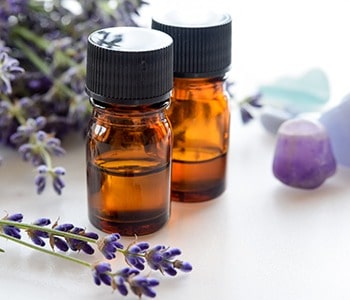 According to the FDA, as of April 2017, food-grade essential oils as well as “solvent-free oleoresins, natural extractives and distillates” that are derived from a “spice, fruit or fruit juice, vegetable or vegetable juice, edible yeast, herb, bark, bud, root, leaf or similar plant material” are legally categorized as part of the “natural flavor” or “natural flavoring” cadre when they are used in foods.
According to the FDA, as of April 2017, food-grade essential oils as well as “solvent-free oleoresins, natural extractives and distillates” that are derived from a “spice, fruit or fruit juice, vegetable or vegetable juice, edible yeast, herb, bark, bud, root, leaf or similar plant material” are legally categorized as part of the “natural flavor” or “natural flavoring” cadre when they are used in foods.
There are dozens of individual essential oils that are approved to put into food, including some well-known oils such as cinnamon and fennel, and some lesser-known ones like hickory bark and horehound.
What these designations mean for you is that if you see these terms on back-of-the-packaging ingredient listings, the flavoring could potentially have come from an essential oil. Then again, it might not, as food manufacturers don’t need to be specific in their labeling.
Chemicals That Food Manufacturers May Be Adding to Food-Grade Essential Oils
According to U.S. Food & Drug Administration (FDA) standards, approved essential oils have officially been designated as “generally recognized as safe (GRAS).” However, this does not mean that chemicals cannot be added to the oil before being included in a product.
According to the FDA’s current Food Additive Status List, chemicals that are typically added to essential oils used for commercial food products include:
- Dilauryl thiodipropionate
- Propyl gallate
- BHT (butylated hydroxytoluene)
- BHA (butylated hydroxyanisole)
- Arabinogalactan
It should also be noted that many countries such as the U.K., Japan (since 1958), Romania, Sweden, and Australia have bans against BHT in food. In the United States, it is still allowed to be added to many food ingredients, including essential oils.
An increasing number of American companies are phasing BHT out in response to consumer pressure, although many are simply switching to BHA, which can be just as dangerous.
BHT is a known endocrine disruptor, can cause organ toxicity, and may be a neurotoxin. The U.S. Department of Health and Human Services’ National Toxicology Program published a report in 2011 that categorized BHA as a chemical that “is reasonably anticipated to be a human carcinogen.”
Two Ways to Ensure Your Food Has the Safest Essential Oil Ingredients
If you really want to know what a certain company means by “natural flavoring” in a certain product, give them a call or send them an email directly and ask them.
If they choose not to answer your question, you do not need their product in your cupboard! It is a consumer’s market. This means that YOU have the upper hand. Ingredients matter and you have a right to know what specifically is in the “natural flavorings” you are ingesting!
And if you choose to use essential oils in your own recipes, remember these two words: supplement grade. This demarcation will ensure that the essential oils you use for recipes at home do not contain any harmful additives and are safe. Don’t settle for anything less than this categorization when you are preparing food with essential oils.
Cooking with Essential Oils
Why not give using essential oils in cooking a try? Here is a simple salad dressing recipe to get you started!
Lemon Vinaigrette Recipe
- 4 T red wine vinegar
- 4 T balsamic vinegar
- 2 T raw, organic honey (or a few drops of liquid stevia)
- 1 clove garlic, finely chopped
- 1 cup organic extra virgin olive oil
- Salt to taste
- Pepper to taste
- 4 drops Organixx Lemon essential oil
Combine all ingredients and shake vigorously in an airtight glass dressing container. Then serve on your favorite salad greens!
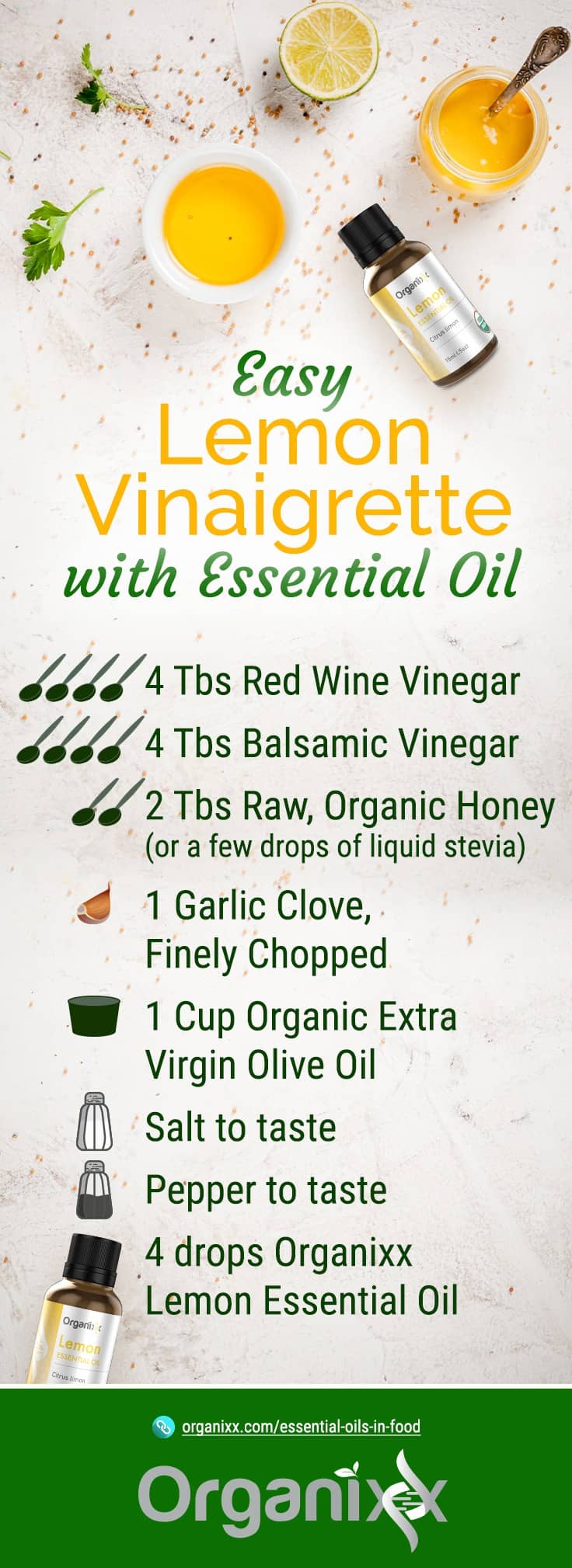
The powerhouse trio of herbs in Magi-Complexx Essential Oil provides the strongest, most synergistic healing effect, helping sufferers of arthritis pain, constant muscle aches and pains, neuropathy, systemic inflammation, slowed wound healing, circulatory challenges, as well as skin irritations like eczema, psoriasis, and acne.
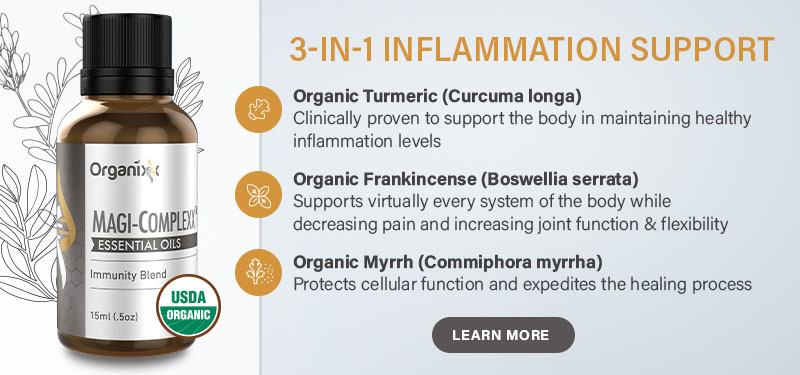
 Sources:
Sources:
Article Summary
Americans are spending more money on organic and natural foods than ever before and the food industry is taking notice.
A few examples of food that could potentially use essential oils for flavor:
- Pudding
- Flavored gelatins
- Pastries
- Chewing Gum
- Sauces
- Salad Dressings
- Herbal and flavor-infused teas
- Ice cream
Essential oils are used as natural preservatives in lieu of chemical-derived preservatives that have been linked to cancer and other detrimental health conditions.
Citrus oils have the best track record when it comes to food preservation because of their anti-fungal and anti-bacterial properties.
According to FDA standards, approved essential oils for foods have officially been designated as “generally recognized as safe,” but chemicals such as BST (a known endocrine disruptor) can still be added to the product.
When using essential oils in your own recipes, be sure to always look for the demarcation supplement grade to ensure they do not contain harmful additives.


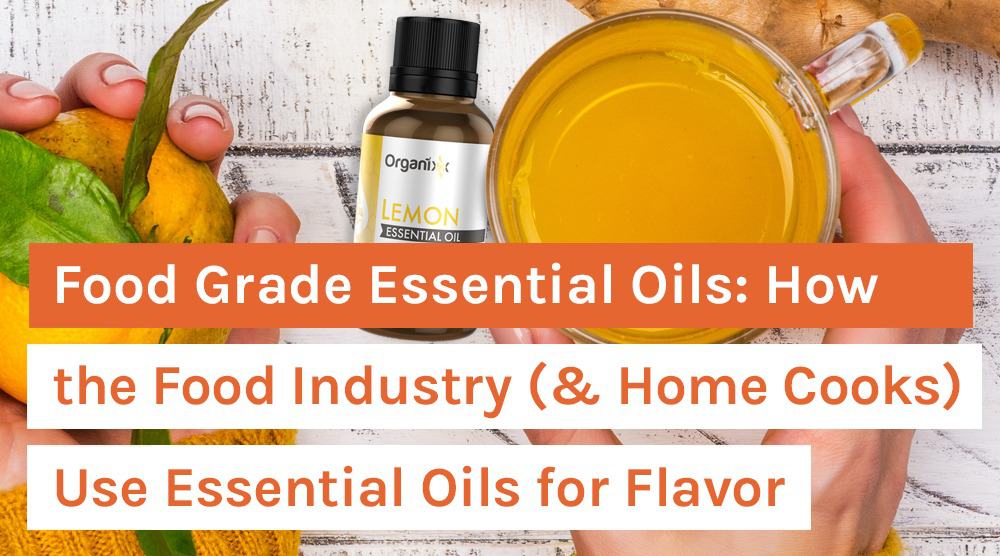
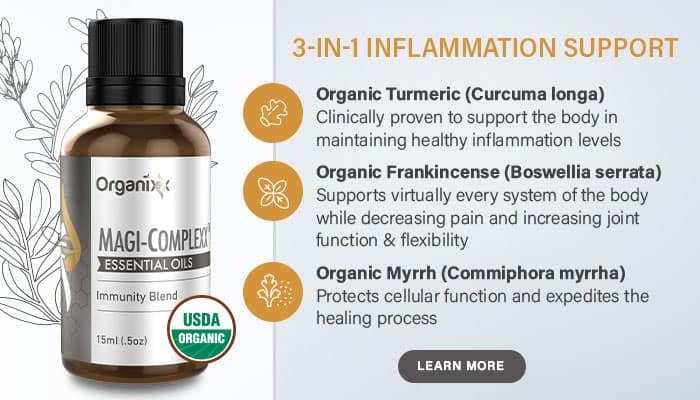


Hello there
I am trying to order again from Organixx the Rosemary oil and oregano oil but I can’t find it
My question is are you still selling it or is no longer available
Thank you
Hi Maria,
We appreciate your inquiry about essential oils.
As you can probably tell, our current Organixx product line does not include essential oils. We sometimes have to make hard decisions regarding our products based on the marketplace and other variables. With that in mind, we had to say a sad goodbye to our beloved Essential Oils product line.
While making the decision to remove our Essential Oils inventory was not an easy one, it allows us to have a laser focus on our current products and ensure we are doing everything we can to fulfill our mission for your continued good health.
However, we do have a suggestion for you!
We have signed on with an affiliate that can continue to provide similar USDA organic essential oils that you were ordering from Organixx.
Please give Rocky Mountain Oils a try by following this link: https://www.rockymountainoils.com/?sscid=31k7_a7tyx&utm_medium=3060444&utm_campaign=1813834
We hope you are as impressed with Rocky Mountain Oils as we are.
Wishing you a lovely day!!
It is always such a joy to read posts created
by actual professionals. I'm fed up with that
no-name, ghostwritten articles. That is the reason it was so great
to take a look at a persuasive piece. I visit the author has ground knowledge it the topic in addition to some practical expertise.
Such kind of information is more favorable than copypasted blog posts thoughts.
We are looking for essential oils in the following flavors: cinnamon and spearmint-to be ingested. Can you tell me which of your products we should purchase?
How essential oil use in food items
Hi Surbhi, thank you for your interest.
Essential oils are used in foods for flavor as well as a natural preservative.
Some examples of food that could potentially use essential oils for flavor are:
- Pudding
- Flavored gelatins
- Pastries
- Chewing Gum
- Sauces
- Salad Dressings
- Herbal and flavor-infused teas
- Ice cream
Purity and quality count when it comes to essential oils. Every time you use an essential oil you are creating a direct pathway to transmit every ingredient in that oil into your body. Essential Oils from Organixx are among the highest quality oils available and are made with indigenously sourced plants retrieved from the world’s best sources.
For more information on Organixx USDA Certified Organic Essential Oils, we invite you to check out the following pages below:
https://shop.organixx.com/pages/essential-oils
https://organixx.com/essential-oils
We hope you find this helpful. Do let us know if you have any other questions on the matter. We're always happy to help. Wishing you a lovely day!
Hi Jessica! We highly recommend anyone interested in pursuing internal essential oil use to do so through your trusted health professional, including if you are taking any form of medication. You can read more about our essential oil blends here: https://shop.organixx.com/pages/essential-oils.
This will help me put my essential oils I have from Organixx to more good uses. I really enjoyed this article and family. Thank you All. Please keep me in the loop.
loved it